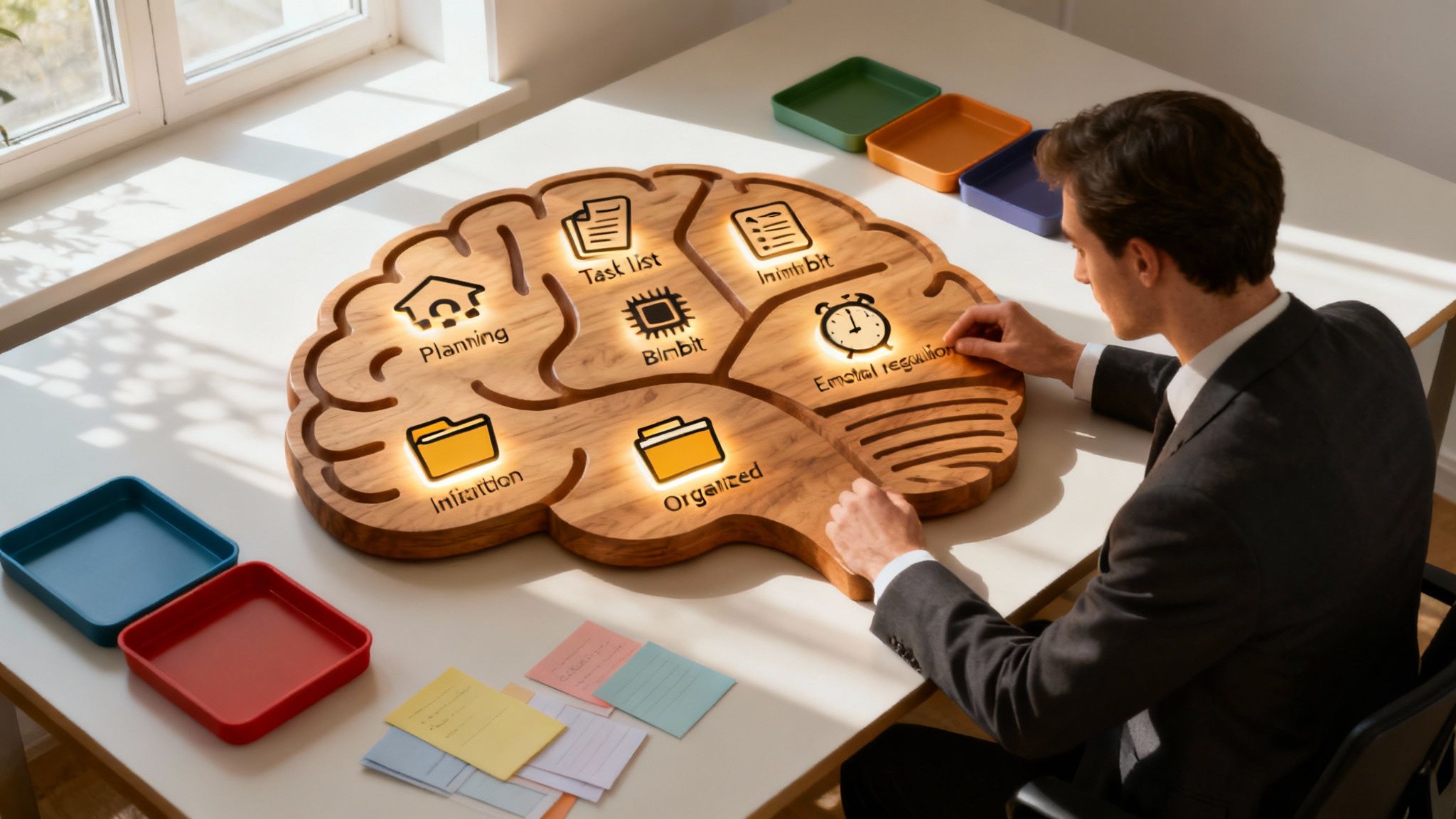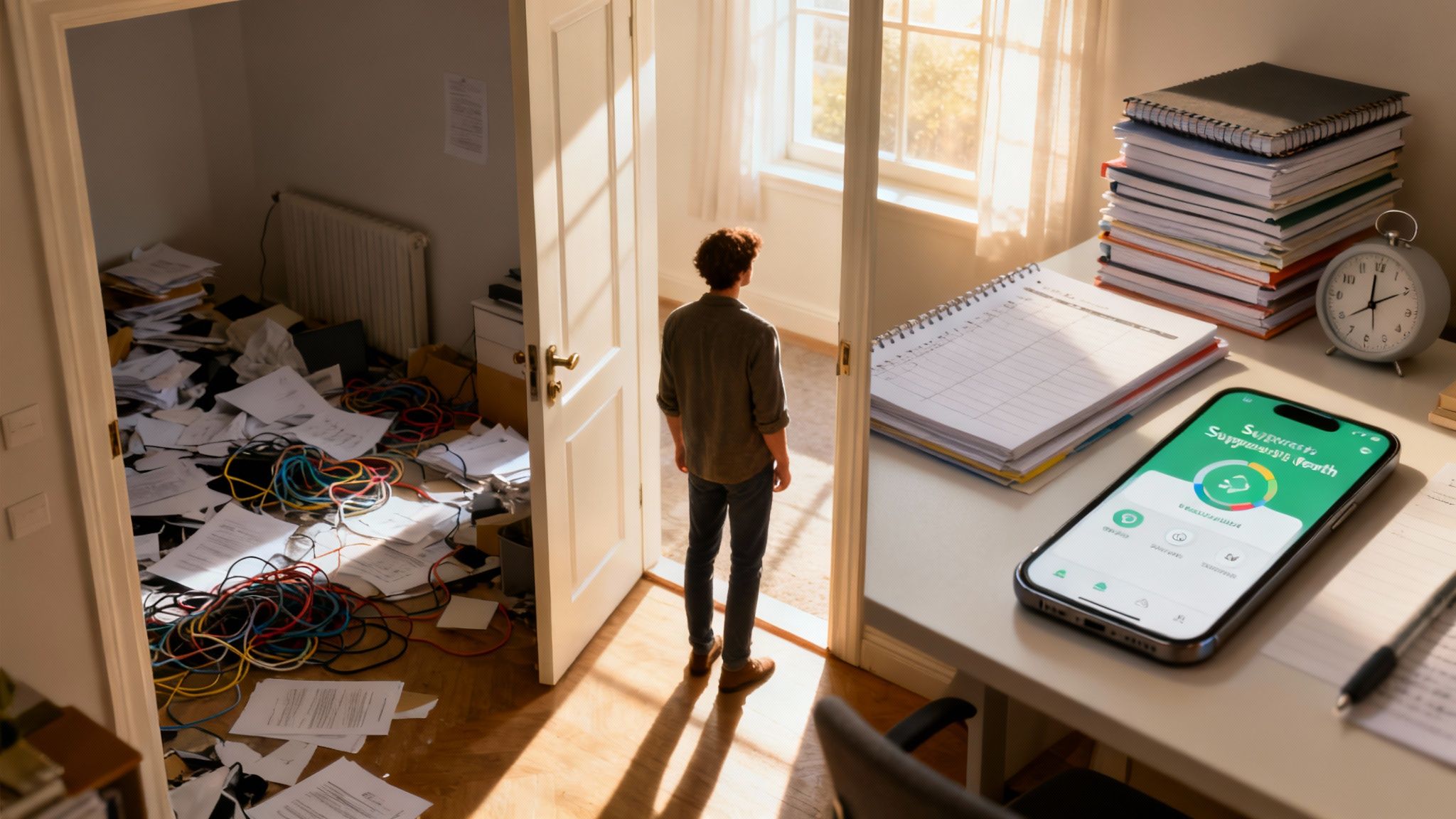Do you ever feel like you lack the ability to motivate yourself? Like you're constantly unmotivated to do even the most basic tasks?
This may not be news to you, but ADHD can affect how motivated - or unmotivated - you feel. While anyone can lack motivation on occasion, it's especially difficult for children and adults with ADHD.
Fortunately, there are strategies you can use to create the novelty and urgency needed to boost dopamine levels and encourage task initiation. In this article, we'll investigate how to apply the RAN method to your boring to-do list, and help you overcome task paralysis to get things done.
Too long; didn't read
- Anticipated rewards drive motivation, both of which are strongly influenced by dopamine.
- Lower dopamine levels in ADHD can result in executive dysfunction.
- Executive dysfunction makes it hard to start or continue tedious tasks or pursue long-term goals without instant gratification.
- The RAN method can help overcome these obstacles by adding reward, accountability, and novelty to tasks, making them more approachable and enjoyable.
ADHD and a lack of motivation
If you have ADHD, you may find that you're capable of making in-the-moment decisions, but need help finding the 'oomph' needed to start tasks or projects. In many cases, this is due to impairments in executive function.1
Executive functions are mental processes responsible for planning, focusing attention, and recalling instructions. Executive dysfunction, then, can manifest as the inability to start a task or make progress toward a goal —especially if you find the project mundane or tedious.
Sometimes, this is referred to as 'task paralysis'. The overload of instructions or information you need to digest before starting something can be overwhelming, and make it feel impossible to begin. Needless to say, task paralysis can be detrimental to productivity.
And of course, there are boring tasks—because they're often repetitive or tedious, monotonous or boring tasks can pose problems for ADHD brains. Even if you start on the task, it's still hard to stay focused and driven. As a result, thoughts or activities that are more exciting can distract you from your long-term goals.
In addition, ongoing or long-term tasks without instant gratification can be difficult to start and complete due to the differences in dopamine levels in ADHD brains.
The dopamine connection
Scientists believe ADHD is associated with lower dopamine levels or faulty dopamine transporters.2 Dopamine is a neurotransmitter responsible for feelings of pleasure, reward, and motivation. It can trigger actions to complete tasks and work towards goals if a desirable reward is attached.
So you could have low dopamine levels causing an insufficient release and reload of dopamine within the brain networks responsible for executive function.
⚛️ Science translation? You have little to no motivation to complete tasks due to no perceived imminent reward. When researchers studied ADHD adults taking stimulant medication to boost neural communication efficiency, they still required external stimuli to help them self-motivate.
Even with ADHD medication, neurodiverse adults needing motivation required things like:3
- A strong interest in the task
- Awareness of a prize upon completion
- Anticipation of negative consequences
- Novelty, risk, or excitement
These motivation hacks are a quick fix. For long-term motivation, try the Inflow app’s daily brain hacks and in-depth learning modules so you can better understand what’s really getting in your way. Get started with Inflow today!
What is the RAN method?
The RAN method is a helpful tool that uses external factors to manufacture motivation.
RAN is an acronym that stands for:
R - reward
A - accountability
N - novelty
In order to get the most out of this method, follow each step in order. It's also important to give thoughtful consideration to each step and how it specifically applies to your unique challenges, whether that's starting tasks, getting bored easily, or lacking accountability.
Reward - treat yourself.
Remember: rewards directly correlate with dopamine and they need to be immediate. So, think about your current surroundings and hyperfixations. What can you use as a reward right now? Bonus points if it's ongoing, like a playlist of your favorite music or intermittent sips of a carbonated drink.
Other ideas for immediate and/or ongoing rewards:
- Listening to a podcast while you work
- Taking short snack breaks
- Mini dance parties every time you complete a subtask (don't knock it till you've tried it!)
Generally, small rewards that you can enjoy during—or even before—the task are more motivating than waiting for one until after the job is complete.
Accountability - walk the walk.
Accountability is when you have someone else "holding you accountable" to do what you said you were going to do. It works for motivation because it adds to your anticipation of negative consequences. Just as a positive reward can motivate you with pleasure, experiences with negative consequences can serve as a reminder for the next time. In most cases, relying on another individual for accountability is your best option.
Having someone present—or someone to hold you accountable virtually—encourages you to complete tasks because past experiences tell you that if you don't make progress, you will disappoint your accountability buddy. And that's the last thing you want to do!
Novelty - make it new or different!
"Novelty" is another way to describe something that's new to you. To make a task novel, add something that makes it feel different.4 A sense of newness can be manufactured for a task in several ways.
Ideas for adding novelty to your next dreaded task:
1. Change your surroundings
Where do you usually do tasks like this? If it's normally at a desk, try going outside (weather permitting) or work at your dining room table.
If you don't have that sort of flexibility, re-organize your desk or move it to a different wall. Anything that changes your surroundings—even a little bit—can create a sense of novelty.
2. Find a new approach
Does the task have to be done in a particular order every single time? If not, mix up the steps! You can also try doing the task at a different time of day than you normally would.
3. Create a different ambience or vibe
People with ADHD and autism are commonly sensitive to sensory inputs, like lights, sounds, and tastes. Incorporate this with your work environment by adding new sensory stimuli to the task—and switch them up as often as possible!
Sensory ideas for changing the vibe:
- Auditory: listen to an exciting new playlist while you do chores.
- Visual: add a new lamp to your workspace, or move existing ones around the room.
- Taste: gather different flavors of gum or hard candy to chew on while you work.
- Smell: Light a new candle!
- Touch: Purchase a keyboard with textured keys, or explore cleaning products with unique textures.
Final thoughts
In conclusion, the RAN method is an effective way to motivate adults with ADHD and improve their focus and productivity.
By chunking goals into smaller tasks, incorporating novelty, finding accountability, and using rewards and incentives, the RAN method can help ADHD brains stay on track with their goals and avoid getting overwhelmed.









